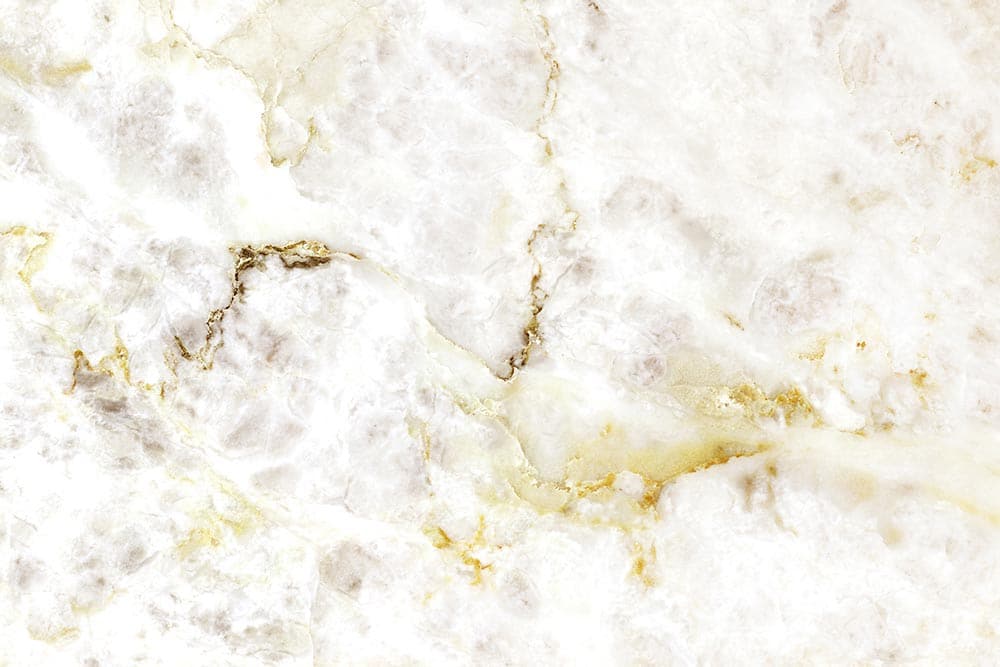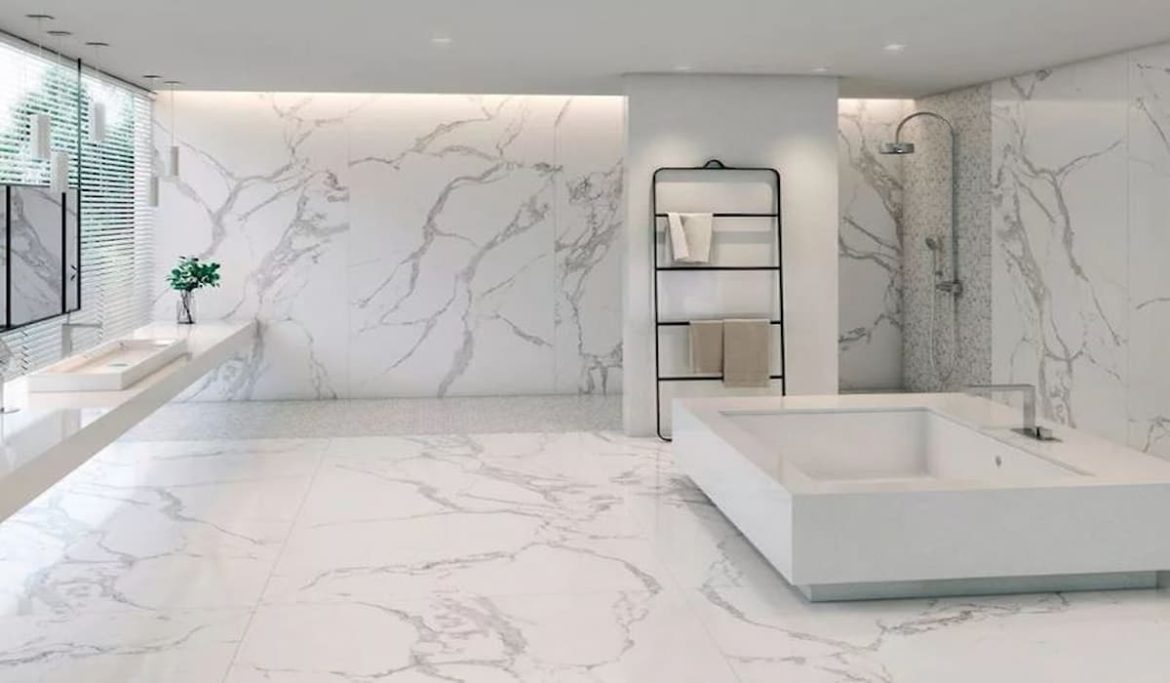Marble Tile Yellowing
One morning as I was working in my office, a very angry home builder called
He informed me that he was constructing a $2,000,000 mansion on Florida’s west coast
A white statuary marble tile covering around 3500 square feet had been placed
A bathroom’s water pipe burst throughout the course of the weekend, flooding the entire house
He explained that after determining the damage’s extent, they could vacuum out all the water to prevent yellowing
The marble tile appeared to be in good shape other than the warped wood, wet drywall, and an upset homeowner
After a few weeks, he started replacing the warped wood and drywall when he realized the white marble tile was beginning to turn yellow
They attempted washing the marble with some bleach and water at first since he initially assumed it might be some residue
However, the yellowing persisted
The homeowner was threatening to sue and was becoming increasingly furious
He requested that I go down there immediately soon to examine the marble and offer some recommendations for what to do
The incident described above frequently happens on white marble tiles that are not unusual and exposed to water
Is it necessary to replace the item, or can the yellowing be removed? Will the yellowing worsen, and what is its cause? Here is a description of how white marble yellows and some possible solutions
It is a regular issue to find white marble that has turned yellow
I have seen marble that has turned yellow or brown all throughout the United States
There are a number of causes for this hue change

IRON STAINING: Oxidation was the cause of the yellowing in the home builder’s sample from above
Iron deposits are found naturally in many white marble tiles
The stone contains the mineral iron, which can appear randomly throughout the stone
If the marble tile contains iron, water, or other oxidizers like acids or household bleach will cause it to oxidize
Years without any fading can pass before white marble tiles on a floor start to gradually become yellow and, in extreme circumstances, entirely brown
This oxidation process is expedited when the tile is wet, as in the flood example above
The oxidation process is comparable to how metal rusts
When exposed to water and air, a brand-new nail will rust and turn brown
The marble’s iron is going through the same process
Iron won’t oxidize if water and/or air aren’t present
This is the cause of the sudden yellowing of some white marble
The process is challenging to undo, and it could be essential to replace the tile
The following stain removal method has demonstrated success in a number of circumstances
It is crucial to establish whether iron is the cause before testing this process
Detecting iron Be sure to take into account factors #2 and #3 listed below before concluding that the marble is discolored owing to iron
Testing for iron will be required if these treatments are unsuccessful
First, check the water for iron if there has been a flood or if too much water has been utilized
To determine the iron content of water, a number of affordable test kits are available
Consult your neighborhood plumbing supply or water softening supply store
Iron may have entered the stone through the water supply if any amount of iron is found
To get rid of the iron, To stop the iron from staining, chelating compounds can be added to the water
This is crucial if the tile is being cleaned with this water
The tile itself should be examined for iron content regardless of whether the water is iron-free
Remove one tile, and have the total iron measured at a testing facility
Test any spare tiles that have never been used, if there are any
If iron is naturally present in this stone, it will likely be found in the extra tile
The following tests should be performed if the findings show that the tile contains iron:

Check for moisture in the tile
Useful equipment that may be used to check the tile for the moisture is a moisture meter
Iron is likely starting to rust if the tile is damp
Getting Rid of Iron Stains
Combine water, sodium hydrosulfite, and sodium metabisulfite to create a poultice solution with the consistency of peanut butter
(These chemicals are offered by your local plumbing supply or home center in a product called Iron-OutTM
) To the afflicted tile, apply the poultice
Give it time to seep into the tile and remain wet
Don’t let the solution dry out
After a few hours, remove any excess solution with a wet vacuum and thoroughly rinse with water and an EDTA-type chelating agent
Since these chemicals can etch the marble, be ready to re-polish it
If the aforementioned method doesn’t work, mix some diatomaceous earth and Iron OutTM into a poultice (one part Iron OutTM to five parts diatomaceous earth)
Apply a thin layer of the thick paste to a small area after mixing with water
Give it 24 hours of covering with plastic
Remove the poultice after 24 hours, then wash the region with water and a chelating agent
The entire floor can be treated after the stain has been eliminated
If the stain is still there, the only option is to replace the item
It’s crucial that the damaged tiles are dry before carrying out the aforementioned treatment
The oxidation of iron might continue if there is still water or moisture present
Additionally, there are several brand-new compounds on the market that contain ammonium thioglycolate, which shows promise in the removal of surface iron oxidation
Check with several suppliers of stone maintenance equipment
It is a regular issue for white marble to turn yellow due to oxidation
A high-quality penetrating sealer (impregnator) should be used to seal new installations since it helps prevent iron oxidation by removing moisture
The aforementioned technique has worked well in some instances of iron staining
I would advise replacing the damaged tiles, though, if the test as described does not yield the required results
INCORRECT MAINTENANCE

The highly polished surface of marble starts to fade as it ages
When this polish is worn down, the surface becomes rough and attracts dirt
This dirt will build up in the stone’s pores and turn it yellow if the wrong cleaners are applied
It’s amazing how frequently I’ve seen this issue with marble
When I looked into these incidents, I regularly discovered that dirty mops were being utilized
The marble floors were cleaned with the same mops that were used to clean the bathrooms and/or kitchens
Strong cleansers, wax cleaning mixtures, or no cleaners at all are used to mop floors
Cure: Use an alkaline marble cleanser to clean the marble tile if you detect yellowing as a result of incorrect care
I would advise using a powerful stone cleaner
To avoid dulling the shine:
Make sure the stone cleaner you purchase is alkaline rather than acidic
Use a gentle brush to scrape the marble after applying the cleanser
Rinse the floor properly
To completely remove all of the embedded dirt, it might be required to repeat this process multiple times
If the marble is dull after cleaning, I would advise re-polishing and using a high-quality penetrating sealer (impregnator)
If the yellowing persists despite multiple cleanings, continue on to the following potential cause
WAX COATINGS OR BUILDUP
Many marble floors have wax, acrylic, urethane, or other coatings applied to them
Many of these coatings aren’t intended for marble floors specifically
Some of these coatings are of poor quality and will start to deteriorate with time
Coatings can frequently be applied in many coats
As the coatings accumulate, they become softer and more easily penetrated by dirt
These coatings demand regular stripping, which is frequently skipped

Cure: Use a commercial wax stripper to eliminate discoloration on the marble caused by wax or coating buildup
I would strongly advise utilizing a floor wax or coating stripper made by the same business
This will assist in preventing compatibility issues
Make careful to thoroughly rinse the floor and adhere to the instructions on the stripper’s label
These strippers frequently call for the use of abrasive pads, which can mar and scrape marble
Perform a tiny test to gauge the results before starting the larger project
RECRYSTALLIZATION
Recrystallization is another technique used to polish marble floors (also referred to as crystallization)
A white marble floor that has moisture will become yellow if this method is used on it
The marble needs to be dry if recrystallization is to be employed
Treatment: If the marble tile has been recrystallized, the layer will need to be scraped off
This layer is frequently removed by polishing the tile with a powder marble polish containing oxalic acid
Apply the powder to the tile, mix in the water, then use a hog hair pad and a regular buffing machine to create a slurry
Work on it until the yellowing is no longer present
If this method doesn’t work, the tile will need to be refined again
Training persons are strongly advised to carry out the polishing and sharpening process









